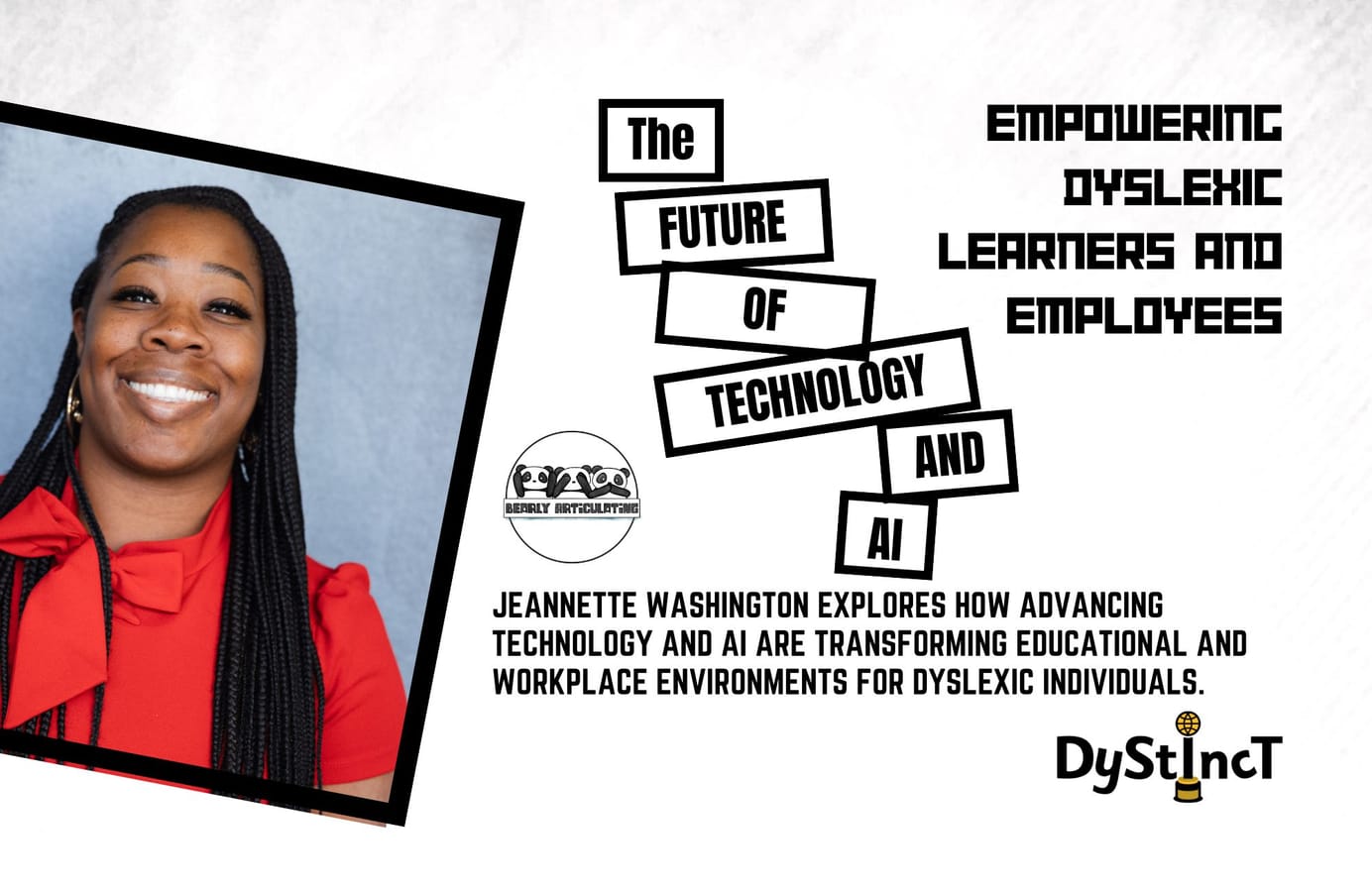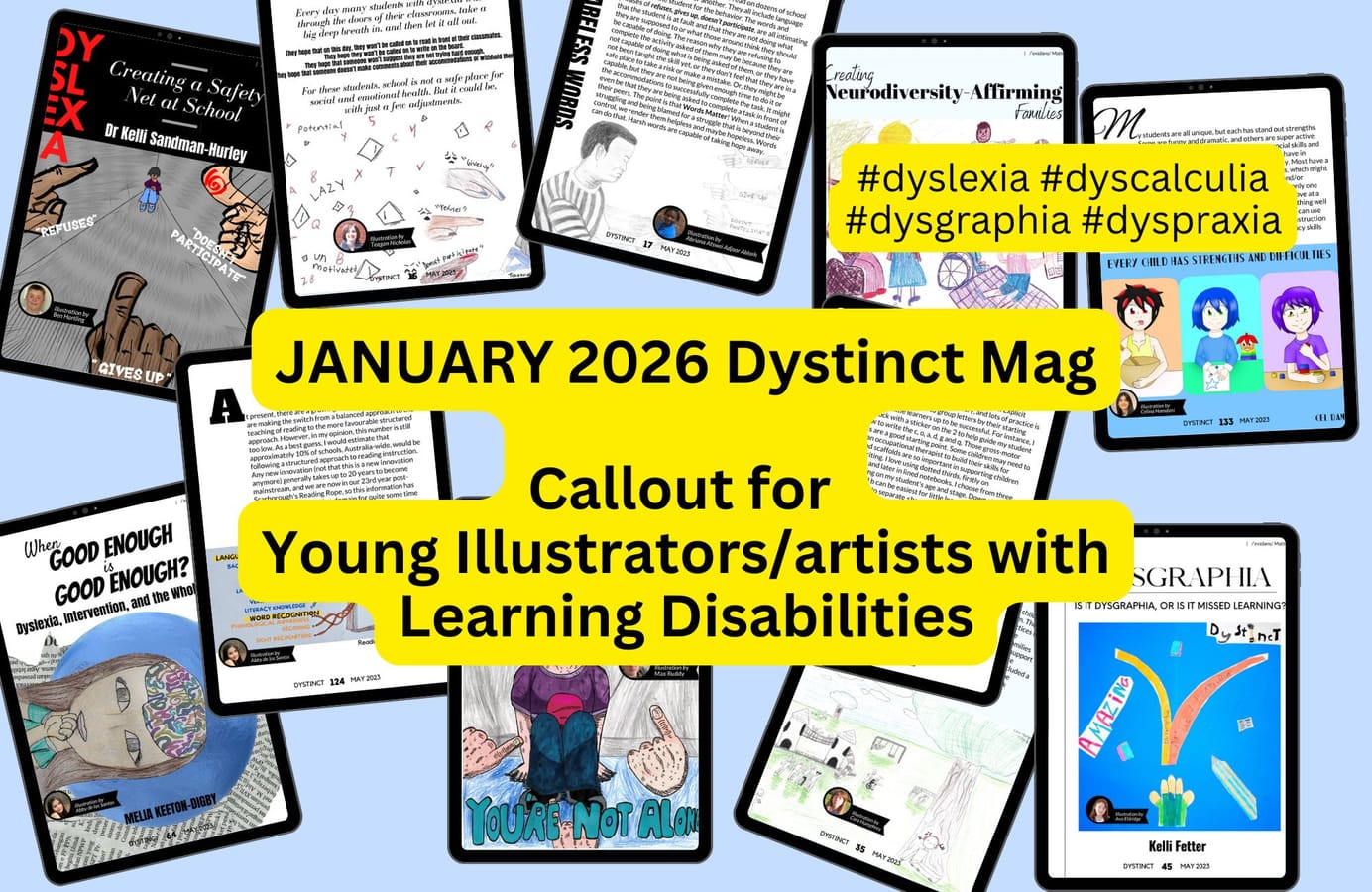
Issue 23: The Future of Technology and AI: Empowering Dyslexic Learners and Employees | Jeannette Washington
Jeannette Washington explores how advancing technology and AI are transforming educational and workplace environments for dyslexic individuals.
As technology and artificial intelligence (AI) continue to advance at an unprecedented pace, they hold immense potential to transform the lives of individuals with dyslexia, both in educational settings and the workplace. This article explores how emerging technologies and AI-driven solutions are reshaping the landscape for dyslexic learners and adult employees, offering new opportunities for success and inclusion.

Adaptive Learning Technologies
Adaptive Learning Technologies
One of the most promising developments for dyslexic learners is the rise of adaptive learning technologies. These AI-powered systems can analyze a student's learning patterns, strengths, and challenges in real time, tailoring educational content to their specific needs (Alsobhi et al.,2015). For dyslexic individuals, this means personalized learning experiences that adjust text size, font, color contrast, and pacing to optimize comprehension and retention.
Text-To-Speech and Speech-To-Text Advancements
Text-To-Speech and Speech-To-Text Advancements
Improvements in text-to-speech (TTS) and speech-to-text technologies are proving invaluable for dyslexic learners and professionals. Advanced TTS systems now offer more natural-sounding voices and adjustable reading speeds, making it easier for dyslexic individuals to access written content (Elkind et al., 2016). Similarly, enhanced speech-to-text capabilities allow for effortless transcription of thoughts and ideas, reducing the cognitive load associated with writing.
AI-Powered poof reading and editing tools
AI-Powered poof reading and editing tools
Sophisticated AI-driven proofreading and editing tools are emerging as game-changers for dyslexic writers. These tools go beyond basic spell-checking, offering context-aware suggestions for grammar, word choice, and sentence structure. By providing real-time feedback and corrections, these technologies empower dyslexic individuals to express themselves more confidently in writing (Rello et al., 2018).
Virtual and augmented reality in education
Virtual and augmented reality in education
Virtual Reality (VR) and Augmented Reality (AR) technologies are opening up new dimensions in education for dyslexic learners. Immersive VR environments can provide multi-sensory learning experiences, helping to reinforce concepts through visual, auditory, and kinesthetic channels (Kalyvioti & Mikropoulos, 2014). AR applications can overlay additional information or visual aids onto text, making reading more accessible and engaging for dyslexic students.
AI assistants in the workplace
AI assistants in the workplace
In professional settings, AI-powered digital assistants are becoming invaluable allies for dyslexic employees. These assistants can help with task management, scheduling, and information retrieval, reducing the cognitive load associated with organizational tasks that may be challenging for individuals with dyslexia (Mortimore & Crozier, 2006). As Jeannette Washington highlights in her work, such tools can be particularly empowering for dyslexic individuals in tech fields, allowing them to focus on their strengths in problem-solving and innovation (Washington, 2021).
This post is for paying subscribers only
SubscribeAlready have an account? Log in


